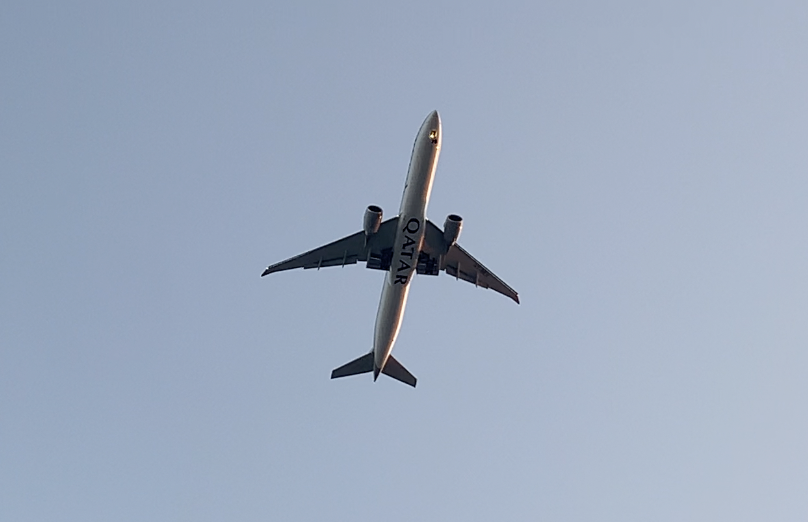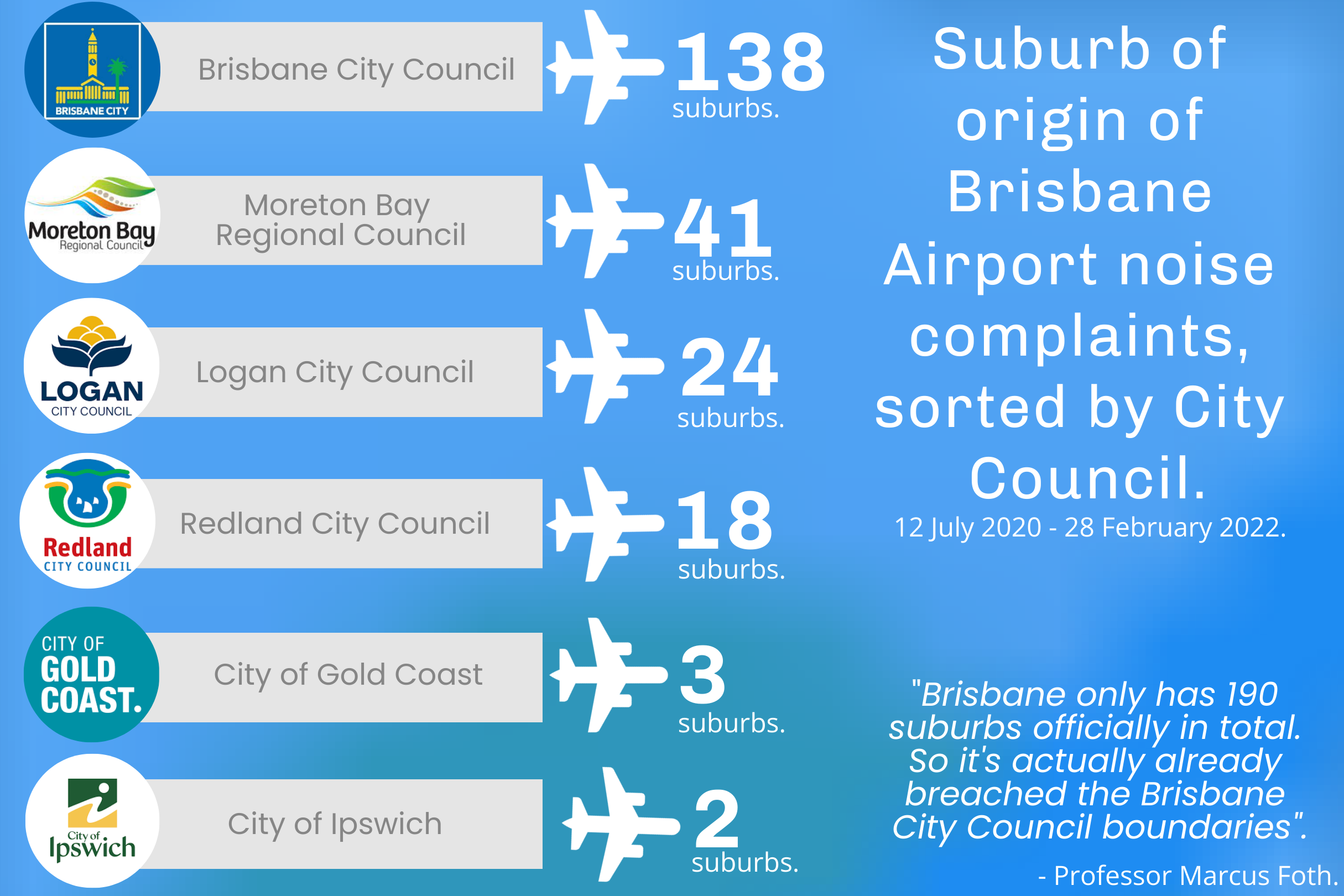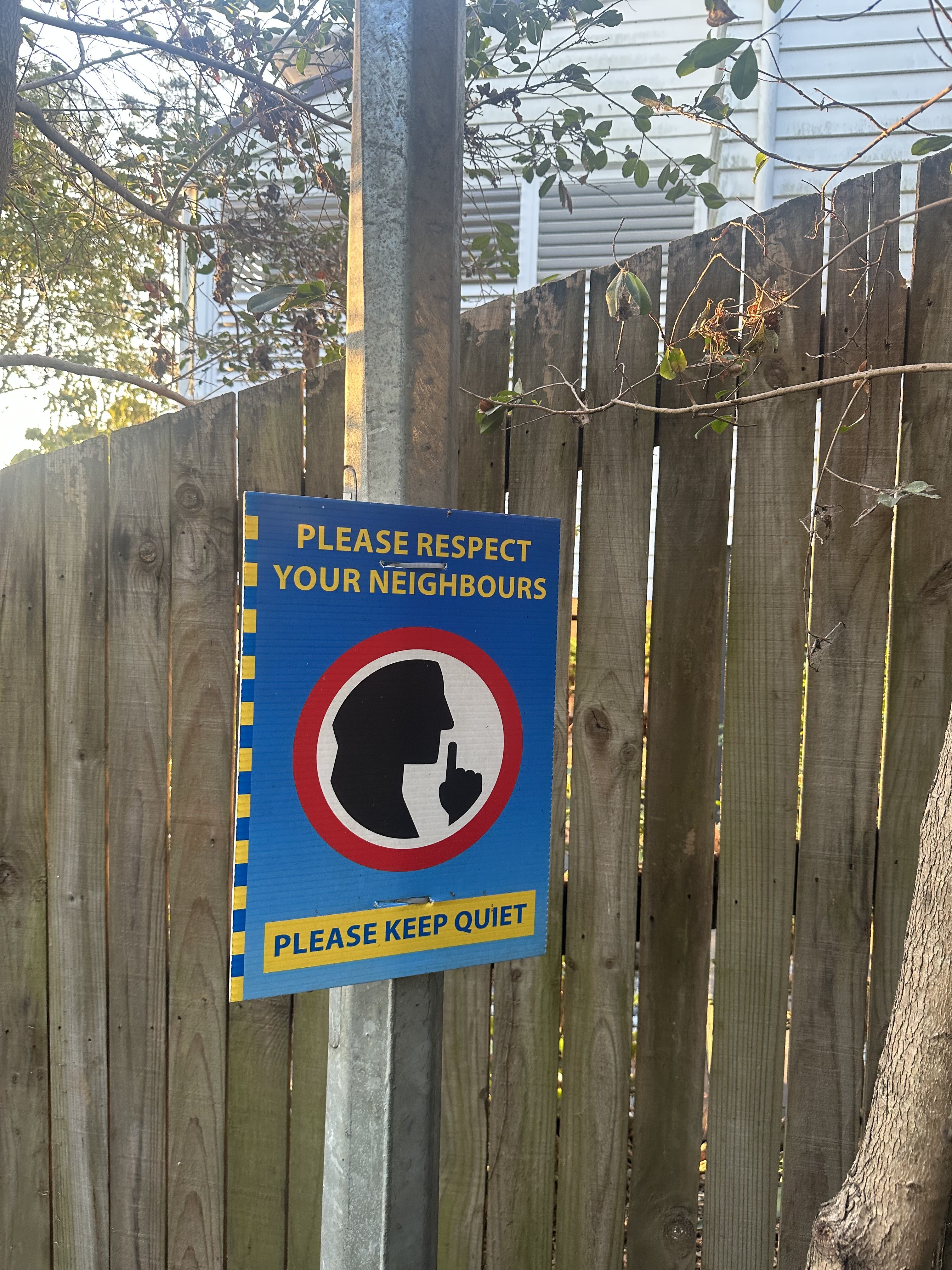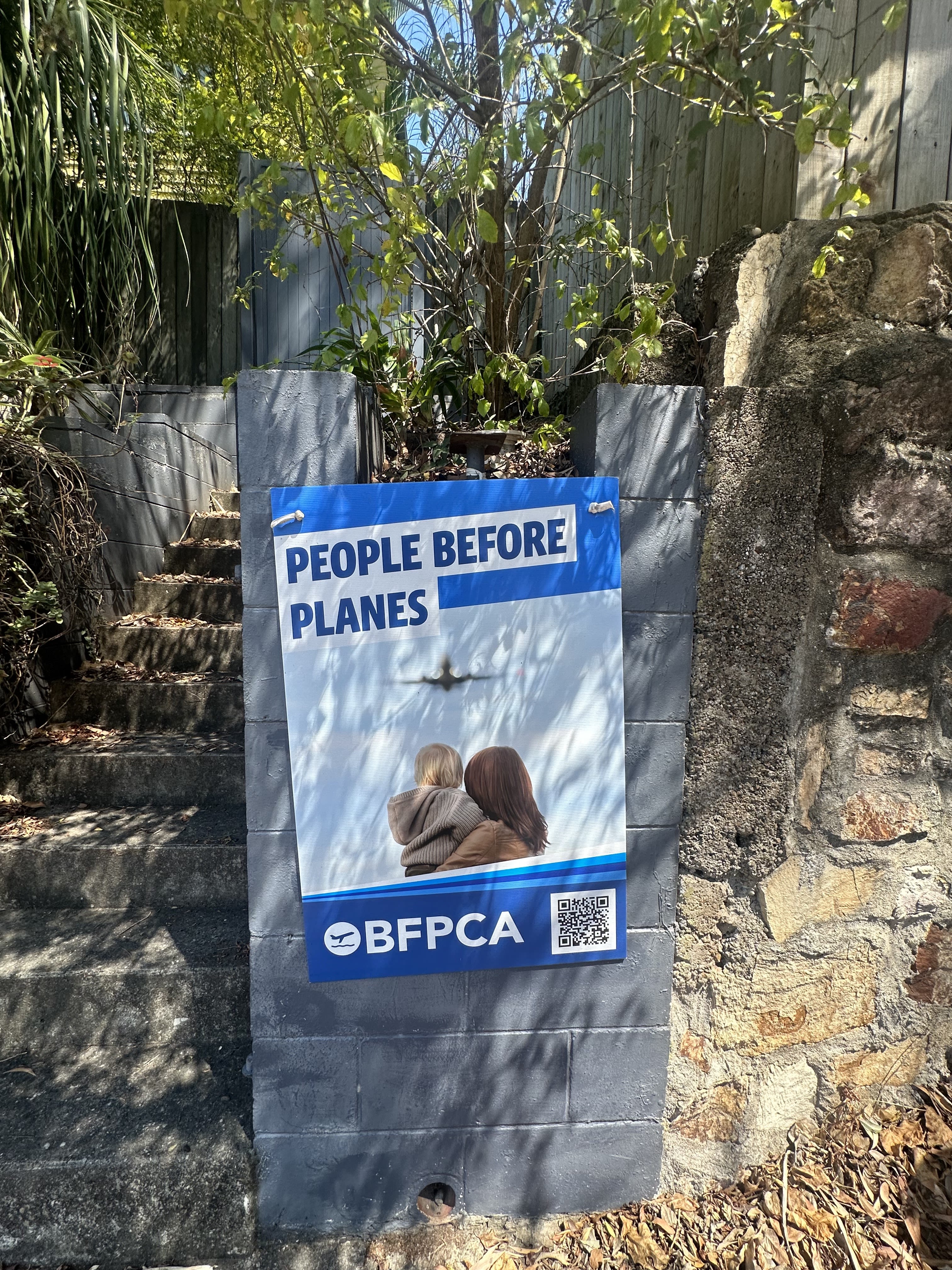'People Before Planes'
The human impact of flight path redesigns on Brisbane residents.

Tess Bignell and her husband relocated to a five acre property in Cedar Creek thirteen years ago.
The town has no traffic lights, no street lights and no footpaths. There is one road in, and one road out.
“We gave up all those modern conveniences to be living out here in the peace and quiet,” says Bignell.
But on July 12, 2020, the uninterrupted soundtrack of nature, with an ambient noise level so low Bignell says it is hardly recognisable on sound meters, was compromised.
“I was down feeding my horses and a jet flew over,” an unusual occurrence, given that the end of the runway at the Brisbane Airport is nearly forty kilometres from Bignell’s property.
“And then a few minutes later, another jet flew over, and I’m going - that’s weird.
“And then another one flew over, and I thought, something’s gone wrong here,” she recalls.
The opening of an additional runway at the Brisbane Airport in July of 2020 known as the new parallel runway saw the design of a new network of flight paths by Airservices Australia.
For Bignell, the redesigning of airspace in 2020 meant she had gone from having zero flight paths over her property to a convergence of eleven, without adequate warning or consultation.
“Everyone knew that Brisbane Airport was building a second runway. We never in any of our dreams thought we’d be affected out here,” she says.
Now the treasurer of the Brisbane Flight Path Community Alliance, as well as a community representative for the Samford Aircraft Action Group, and the Aviation Advisory Board for the Federal Government, Bignell says it is the lack of regulation around aircraft noise that is particularly concerning.
The Brisbane Flight Path Community Alliance (BFPCA) is a community advocacy group that unites residents affected by excessive aircraft noise pollution from across Brisbane.
Chair of the alliance, Professor Marcus Foth, says that the main goal of the BFPCA is for there to be less noise and more constructive avenues to re-introduce aviation regulation.
“We have no recourse for the mental health issues, for the distress, for the financial loss, for the loss of amenity and for just the various impacts that people are experiencing as a result of this.
“What is then adding to that is the fact that people were told that there would be no noise,” says Foth.
In information published in response to a question on notice from a 2022 Senate Estimates hearing, government agency Airservices Australia said they had received complaints about Brisbane Airport aircraft noise from residents across 226 suburbs.

“Brisbane only has 190 suburbs officially in total. So it's actually already breached the Brisbane City Council boundaries,” says Foth.
The BFPCA chairperson notes that unlike construction, loud music at a party, highways and train lines, the aircraft industry is entirely exempt from noise regulation.
“If you happen to live in a property where your home is inundated with excessive noise pollution from the flight paths and you’ve got planes as low as 300 metres above you, to the extent that some people are saying they can see the eye colour of the pilot, there is nothing that you can use in order to substantiate your complaint.
“There’s no regulation where you can say it should only be X number of flights or 50 or 60 decibels,” says Foth.
Listen to the full interview with Professor Marcus Foth, BFPCA Chairperson.
For retired Moorooka resident, Elizabeth Barnes, this lack of regulation plays into the constant frequency of aircraft noise, where planes can alternate between the two runways, one minute apart for hours, she says.
Barnes notes that, being retired, she is “trying to enjoy [her] house during the day, and do things at home,” but the constant frequency of overhead aircraft has an immense mental impact.
“I have family that lives in Mount Gravatt East. They don’t have any impact at all. And I’m almost crying on their shoulders. Because it’s so bad here.
“I don’t want to be forced out of my house. Because I do like living here and relocating for me at my age is not an option. It’s too expensive,” says Barnes.

Taryn O’Riordan lives in The Gap with her husband and two teenage children. For her family, relocating is also not a viable option to mitigate the impacts flight noise is having on their daily lives.
“My husband is in a job down the road and with my kids in high school in Ashgrove, it’s just not convenient to move.
“It’s just sad that you spend so much money and put a mortgage down and you hate the place you live in and you’re paying it off by working hard for it," she says.
As a disability support worker, O’Riordan’s work hours vary. The nature of her shift work means that she “get[s] the worst of both worlds,” in terms of available sleeping windows.
“I had to go to my Doctor and get anxiety tablets because I am so anxious from it all. I never bought this house 10 years ago to be near an airport, and now they’ve made it like an airport,” says O’Riordan.
Video - aircraft noise captured by residents across Brisbane.
Video - aircraft noise captured by residents across Brisbane.
Tim James was attracted to the suburb of Indooroopilly in the city’s West because he thought it would be quiet. And it was, prior to the redesign of Brisbane’s flight paths.
Referring to a noise monitor installed by Airservices in nearby St Lucia, he says that at one time, the monitor recorded sound levels of frequent nighttime aircraft at around 65 to 73 decibels.
“Background noise here is a bit under 40 [decibels] at nighttime. So that’s a 30-decibel spike. It’s kind of like someone starting up a lawn mower outside your window”.
Dealing with Airservices' noise complaint system is particularly troubling for the Indooroopilly local.
“They say they’ve got a very high volume of inquiries and there is always a long delay in replying. They call them inquiries, not complaints.”
“About three to five weeks later, sometimes you get a written reply from them, a cut and paste form letter saying that they acknowledge your concern, but there is no regulated noise limit in Brisbane and there’s no curfew,” he said.
Acknowledging that aircraft noise in Indooroopilly has recently improved, James says he is unsure whether this relief is temporary, and worries for how long the quiet nights will last.
An Emeritus Professor at the University of Queensland, who does not wish to be named, has lived in Toowong West since 1987.
He says that one argument being promulgated is that residents should have considered the location of their properties prior to purchase.
“Many people have lived in those areas for 30 or 40 years,” he says.
“I’ve lived in my suburb for 37 years, since before the Legacy runway was put in.
“We've always had a little bit of noise from Archerfield and from emergency helicopters, but those are very infrequent, so it's not as disruptive as what we have experienced since 2020”, the Toowong resident notes.
Balmoral resident Andrew Bird, notes that living in close proximity to the airport means that aircraft noise has always been a part of life.
“The old Legacy runway was always there. After 20 years of living in the area you kind of get used to it”.
“But ever since they opened the new runway the flights are definitely more often and much louder”, notes Bird.
For Bird, this means “relentless” flights overhead from 6:00 am to 9:00 pm each day, only minutes apart, as well as a Qatar flight that takes off at around 3:00 am every morning.
Resorting to sleeping with earplugs, Bird notes that the constant stress of aircraft noise “is compounded in a couple of ways”.
“Not only is there the audible stress, but it’s also the stress of knowing that you can’t do anything about it. And then no one is going to help you,” Bird says.
For the copywriter working freelance from home, this constant noise also impacts his ability to engage in Zoom meetings or consult with clients over the phone.
“l have to stop the conversation and say - just hang on a bit, there’s another plane coming over,” says Bird.

Solutions offered by residents and the BFPCA to address excessive aircraft noise include more over-water operations, improved methods of submitting complaints to Airservices, increased accountability of the Brisbane Airport Corporation, and an independent review of the city’s flight paths.
A proposed cap of 45 flights per hour and a nighttime curfew between the hours of 10pm and 6am was also introduced into federal Parliament on the 16th of October 2023 by Greens MP for Ryan, Elizabeth Watson-Brown.
In detailing the steps forward for the BFPCA, Professor Foth says that whilst progress has been slow, the silver lining is the exercise of community building.
“There is a lot of peer support out there. There are communities that are uniting. What we've managed very successfully is making sure that we are not giving in to the airport's tactics, which is to divide and conquer,” concludes Foth.
Foth says that the best thing that residents living under flight paths and affected by Brisbane’s aircraft noise can do is to subscribe to the BFPCA’s newsletter.
